- Home
- Zadie Smith
Feel Free: Essays Page 19
Feel Free: Essays Read online
Page 19
For me—and I must presume for the artist (born 1969)—things are different. For us, the image-map that has been made of the world is not exactly the same as the territory itself, or rather, we can still remember—if only very vaguely—a moment in time when the seams were still partially visible. A time just before the time we ceased thinking of images as the representation of any particular external reality and started to live within images themselves. Centrifuge—simultaneously nostalgic and apocalyptic—takes us back and forward to the moment before (or after?) image entirely overlaid phenomena and screen ate world. And when we are confronted with Sze’s centrifugal swirl of rapidly revolving ideas, I say it is hard to know which element to separate from the rest. Yet if you are to write about something you must choose, and so I choose the next-door room in the studio, in which a companion piece, as yet unnamed, partially repeats Centrifuge and reflects upon it. Here the bamboo scaffold continues, and the same flickering scraps of screens hang from it, but the main amphitheater is now presented in the form of a desk—the artist’s own—one of these semicircular working areas that create a private cocoon for whoever places their Aeron chair into the snug, enclosing gap. Sitting behind such desks, consulting perhaps two or three screens at once (desktop, laptop, phone), we are the masters of our domains, daily fabricating our own visual maps of the territory. Sze takes the types of images we store in our personal hardware and projects them outwards, remaking them as apparently independent objects in the world, and refitting them with a sense—however partial—of actuality and authenticity. (On the surrounding walls, for example, projections of animals run, each at their own speed, but Sze has mapped their relative speeds so that the difference between the bird and the big cat as they race round the room is as it would be in reality. Aligning recorded images to present time is one way of tethering the symbolic order more firmly to the real. A similar effect is achieved by Christian Marclay.) This is a sense rarely available to the millions of us who now spend the larger part of our lives in the consideration and curation of digital simulacra, roving round the world without so much as leaving our chairs. Every kind of image is available to us: random, chosen, local, global, microscopic, immeasurable, personal, political, sacred, pornographic, iconic, anonymous. And, after the workday is over, the process seamlessly continues, thanks to the miniature computer/camera in our pockets. In this life, the material world becomes peripheral, although it continues to exist, dragging itself slowly behind us like uncoiled viscera, often unpleasant and inconvenient yet apparently still necessary. How tiresome it is to eat and drink and dress and move one’s body and take a shit! But all these things must be done, and around Sze’s desk the abject evidence of bodily existence lingers, the remnants and effluvia of the non-virtual world. Toilet paper, milk cartons, many empty food boxes. Pot-plants, packaging from Amazon, a tower of tatty books. On top of which pile there sits the Collected Fictions of Jorge Luis Borges. And inside that you will find Borges’ famous one-paragraph tale, “On Exactitude in Science,” which tells of “a map of the Empire whose size was that of the Empire, and which coincided point for point with it.”* In this fable, the ingenious map eventually falls out of favor, as it happens that following generations are “not so fond of the Study of Cartography.” They neglect the map, considering it useless, and so it is left to rot, although by some desperate folk it is repurposed: “In the deserts of the West still today, there are tattered Ruins of that Map, inhabited by Animals and Beggars.” It was this Borgesian sketch that was famously repurposed by the philosopher Jean Baudrillard, in his Simulacres et simulation, a book that transforms allegory into theory, while reversing the moral of the tale. In Baudrillard’s vision of postmodernity, it is reality that has become a kind of tattered ruin, a desert. It is the map itself upon which we all now, seamlessly, live.
How can this simulation we live within be made truly visible to us? Perhaps only a total rupture could affect it. In the ruins of a catastrophic event we can imagine an inspired, practically minded artisan undertaking the construction of something like Centrifuge. She would be someone who recalls the simulation and believes she can re-create it piece by piece, with the materials available—with whatever is to hand. But how could you reboot, using only what was left? Unwieldy, ugly, heavy, noisy, white projectors might do the trick, casting their various simulations onto those barely there screens, and further abroad, to the containing space, although this stream of images is sometimes interrupted with the message Now Loading—the digital equivalent of TV snow—which zips round Sze’s studio walls like a shadow, like a ghost. Now loading the world and everything in it. Or might it not be the work of a figure like the Unabomber, who turns from technology in favor of the “natural,” of the “real,” but is simultaneously forced to re-create, out in the woods, at least some of its systems (bomb-making, computer viruses) precisely to communicate his rejection? Centrifuge comes back to us from the future, with a memory of how we once lived. Consider the Colosseum, in whose image Centrifuge is built. It is a model of the repurposed image factory—and an object lesson in the desertification of the real. Once, the Colosseum was a place of performance, in which faithful copies of the world—sea battles and dramatic reenactments and combats between man and beast—were performed. Now it is the distant and somewhat unconvincing original source of an infinite series of postcards, tea-cosies, snow-globes, and so on, a place where Romanian migrants dressed as centurions charge tourists for selfies in front of a crumbling edifice they know only from the movie Gladiator. And, just like all those little colosseums you can buy within the Colosseum, Centrifuge contains a little version of itself in its left-hand corner, a colosseum within a colosseum. In its broken bamboo centrifuge flickers an identical selection of images, but all of it miniaturized. A map to the territory, at a scale of about an inch to a yard.
• • •
After the rupture, after the apocalypse, amid the ruin of cables and wires, someone might ask: what was the purpose of all of those images within and through which we lived? (Just as Romans, in the Middle Ages, wondered about the great stone arc of antiquity that lay at the end of the Via dei Fori Imperiali, but, mostly uninterested in the answer, instead stripped it for parts.) What was the Internet? What was it for? How did it feel? In the rubble somewhere, patching together this and that, Centrifuge would be one form of an answer, for it not only recalls the recent image factories of our iPhones but the infinitely longer history of our image-making practices, period. The prehistories of symbol, image and simulacra are continually evoked, from Plato’s shadows in the cave—which those projectors cast all around the room—to our earliest sources of image replication: mirrors, water. You can place your hand in front of one of the projectors and see an image factory laid out on your palm, but you can also lean over one of the many shards of glass and see your palm repeated there, as pure reflection, and then again there are pieces of film that project a reflecting pool or puddle over a secondary image—of the sky or a black wall—so that the light that dances on water is consumed by the landscape behind it and reflects nothing at all. Paint—once the great medium of image replication—is also present, though it is put in its place. It is only another “material.” Little scraps of it are daubed here and there, or spilled, or left to harden in thin wafer scraps that hang from the structure like plastic bags caught in the branches of trees. Gone but not forgotten.
To the great mass of images to which we are every day subjected—and to which we ourselves industriously contribute—Sze applies a centrifugal force, separating base elements from each other. If most of these images are from her iPhone it is to be noted that they are never social images. There are no relationships recorded, no conversations, or even people passing time together. She has chosen instead only those pieces of film that demonstrate forces and states. To go fast, to go slow. To be open/closed or whole/broken. To fall and to rise. To be wet, to be dry. Heat and cold, forward and back, light and dark. To be orange. To explode, to withe
r. A few shards feature Sze’s daughters but what is captured in those moving images is not human personality but rather human states: child sleeping, child running, child submerged in water. This is not to say the work is impersonal or cold: exactitude in science involves looking as closely and intimately at your subject as any poet. But different qualities are picked out. Centrifuge speaks of one of our oldest technological instincts: to record what we have seen. In rock, in pencil, in print, in paint, in film—and now in pixels. Images have always been a form of haunting, but when film arrived it became possible to see the dead walking and talking, something previously only conceivable in the realms of witchcraft and myth, and though film has never lost its trace of the occult we have always attempted to tame, control or disguise it. Once upon a time, cinema screens were flanked by reassuring velvet curtains, as if to convince us that what we were watching was simply a more vivid version of theater. Our televisions used to nestle in great wooden containers, disguised as perfectly ordinary pieces of bourgeois furniture. But sometimes, when you came downstairs in your pajamas, to get a glass of water at 2 a.m., and the TV was still on—emitting that strange fizzing “snow”—didn’t you feel the presence of something . . . else? During my childhood (and Sze’s) Steven Spielberg was the great popular interpreter of these strange screen emissions; he saw that our technology was trying to tell us something through all that mesmerizing static. But what was the message? Sometimes, as in Poltergeist, historical demons haunted it (note to self: never build a house on an Indian burial ground) but elsewhere, in ET and Close Encounters, disturbances in electromagnetic waves signaled an attempt at communication, to which we were to respond with our own technology. This technology tended to be basic, homemade, cobbled together. Spielberg—an incorrigible technological optimist—always shunned the specter of apocalypse, but like Sze he was deeply attracted to homemade tech, and so to create the necessary conditions usually placed his stories in the hands of technological incompetents—children, or “everymen”—who were then forced to use “whatever was to hand.” This is perhaps why—of all the images in Centrifuge—it strikes me, as a child of the eighties, that it is only Sze’s Spielbergian static that represents a break or rupture in the image factory, a seam that allows for the possibility that images not only communicate with each other but can attempt a communication with us. For TV static is what happens when your television tries to turn junk signals from elsewhere into images. These signals can come from other appliances, from distant cables, from stray radio waves. But they can also be the unimaginably distant echoes of the Big Bang, arriving from a distance of many billions of years, traveling down our old analog TV antennas and interpreted as that flickering black-and-white dance of fizzing atoms. Only there, in the static, can I make out the seam between the real and the image. Only there do I experience a transmission that is not merely a replication, but rather a genuine transformation and communication of an event, authentic in itself. I look again at that scrap of screen, upon which a child runs past the Pyramids of Giza. That is not the child nor is it Giza, they are only representations—copies. But when I look at analog snow, I am truly in the presence of the audiovisual remnants of the Big Bang, I can see the past haunting the present, speaking to me—shimmering.
In our digital age it is tempting to say that we are no longer haunted by external phenomena as we once were. The seam is gone. The source cut off. The image, freed from hardware—and disturbances from the universe—can haunt whatever space, unimpeded. It doesn’t speak of the beginnings of the world any more, or have any hint of alien life about it. Instead we seem to be the ghosts in our own machines. Sze’s eldest daughter looked at her sleeping image with something like wistfulness, and I myself have known many a nostalgic toddler who bends like Narcissus over his mother’s phone to gaze at images of himself drinking milk from the breast or sleeping in his cot. He sighs blissfully—he wonders where the time has gone. We are being constructed out of images of ourselves, haunted by our own past, by last year, last week, by #throwbackthursday. We have become so used to summoning up dead images of ourselves that we barely notice we live among ghosts, and it is left to our artists to truly spook us, to make us see anew what has become second nature.
Centrifuge plays this role wonderfully—the role of the art-specter—not least because it was originally commissioned to haunt the Middle Hall of the Haus der Kunst in Munich. That survivor of neoclassical Nazi architecture is itself an infamous simulacrum—a monument to a glorious Greco-German past that never existed—and it was within its galleries that Hitler hoped to effect a centrifugal separation of pure from “degenerate” art. What better place for Sze’s haunted image factory, which records the twenty-first century’s deep-dive into the supremacy of the image, but never forgets the persistent abjection of real human bodies, which, unlike images, must at some point meet their end.
GETTING IN AND OUT
You are white—
yet a part of me, as I am a part of you.
That’s American.
Sometimes perhaps you don’t want to be a part of me.
Nor do I often want to be a part of you.
But we are, that’s true!
As I learn from you,
I guess you learn from me—
although you’re older—and white—
and somewhat more free.
—Langston Hughes, from “Theme for English B”
Early on, as the opening credits roll, a woodland scene. We’re upstate, viewing the forest from the perspective of a fast-moving car. Trees upon trees, lovely, dark and deep. There are no people to be seen in this wood—but you get the feeling somebody’s in there somewhere. Now we switch to a different world. Still photographs, taken in the shadow of public housing: on the basketball court, the abandoned lot, the street corner. Here black folk hang out on sun-warmed concrete, laughing, crying, living, surviving. Both the shots of the woods and the city have their natural audience, people for whom such images are familiar and benign. There are those who think of Frostian woods as the pastoral, as America the Beautiful, and others who see summer in the city as, likewise, beautiful and American. One of the marvelous tricks of Jordan Peele’s debut feature, Get Out, is to reverse these constituencies, revealing two separate planets of American fear—separate but not equal. One side can claim a long, distinguished cinema history: Why should I fear the black man in the city? The second, though not entirely unknown (Deliverance, The Wicker Man), is certainly more obscure: Why should I fear the white man in the woods?
A few years ago I interviewed Peele as he came to the end of a long run on the celebrated sketch show Key and Peele. On that occasion he spoke about comic reversals (“I think reversals end up being the real bread and butter of the show”) and of finding the emotional root of a joke in order to intensify it: “What’s the mythology that is funny just because people know it’s not true?” Get Out is structured around such inversions and reversals, although here funny has been replaced, more often than not, with scary, and a further question has been posed: which mythology? Or, more precisely: whose? Instead of the familiar, terrified white man, robbed at gunpoint by a black man on an urban street, we meet a black man walking in the leafy white suburbs, stalked by a white man in a slow-moving vehicle, from whose stereo issues perhaps the whitest song in the world: “Run, rabbit, run, rabbit, run run run . . .”
Get Out flips the script, offering a compendium of black fears about white folk. White women who date black men. WASPy families. WASPy family garden parties. Banjos. Crazy younger brothers. Crazy younger brothers who play banjos. Sexual psychopaths, hunting guns, cannibalism, mind-control, well-meaning conversations about Obama. The police. Well-meaning conversations about basketball. Spontaneous arm-wrestling, spontaneous touching of one’s biceps or hair. Lifestyle cults, actual cults. Houses with no other houses anywhere near them. Fondness for woods. The game Bingo! Servile household staff, sexual enslavement, nostalgia for sl
avery—slavery itself. Every one of these racial reversals “lands”—just like a good joke—simultaneously describing and interpreting the situation at hand, and I think this must account for the homogeneity of reactions to Get Out: it is a film that contains its own commentary. For black viewers there is the pleasure of vindication. It’s not often they have both their real and irrational fears so thoroughly indulged. For white liberals—whom the movie purports to have in its satirical sights—there is the cringe of recognition, that queer but illuminating feeling of being suddenly “othered.” (Oh, that’s how we look to them?) And I suppose the satisfaction of being “in” on the joke. For example, there is the moment when the white girl, Rose (Alison Williams), and her new black boyfriend, Chris (Daniel Kaluuya), hit a deer on the way to her parents’ country house. She’s driving yet when the police stop them he’s the one asked for his license. Rose is sufficiently “woke” to step in front of her man and give the cop a self-righteous earful—but oblivious to the fact that only a white girl would assume she could do so with impunity. The audience—on both sides of the divide—groans with recognition. Chris himself—surely mindful of what happened to Sandra Bland, and Walter Scott, and Terence Crutcher, and Samuel DeBose—smiles wryly but remains polite and deferential throughout. He is a photographer, it was his photographs of black city life we saw behind the credits, and the very different lens through which white and black Americans view the same situations is something he already understands.

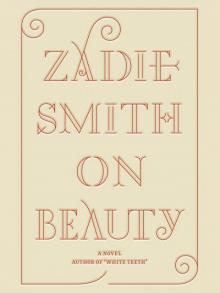 On Beauty
On Beauty Nw
Nw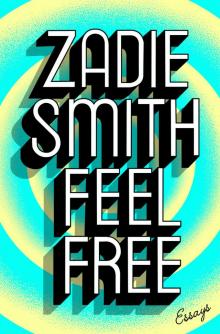 Feel Free: Essays
Feel Free: Essays The Book of Other People
The Book of Other People White Teeth
White Teeth Changing My Mind: Occasional Essays
Changing My Mind: Occasional Essays N.W.
N.W. Swing Time
Swing Time The Embassy of Cambodia
The Embassy of Cambodia The Autograph Man
The Autograph Man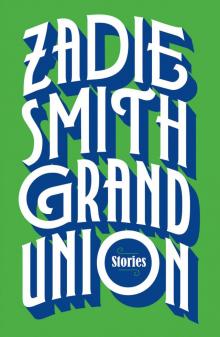 Grand Union
Grand Union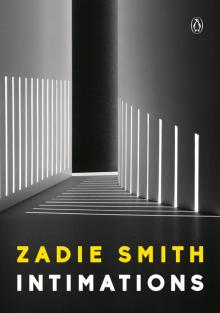 Intimations
Intimations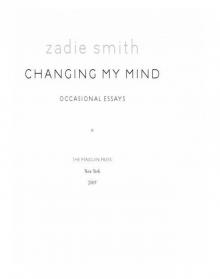 Changing My Mind
Changing My Mind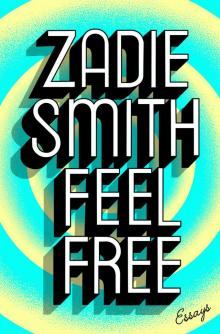 Feel Free
Feel Free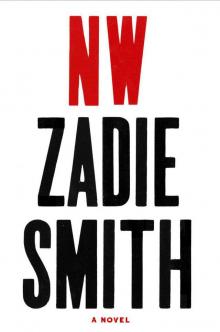 NW: A Novel
NW: A Novel